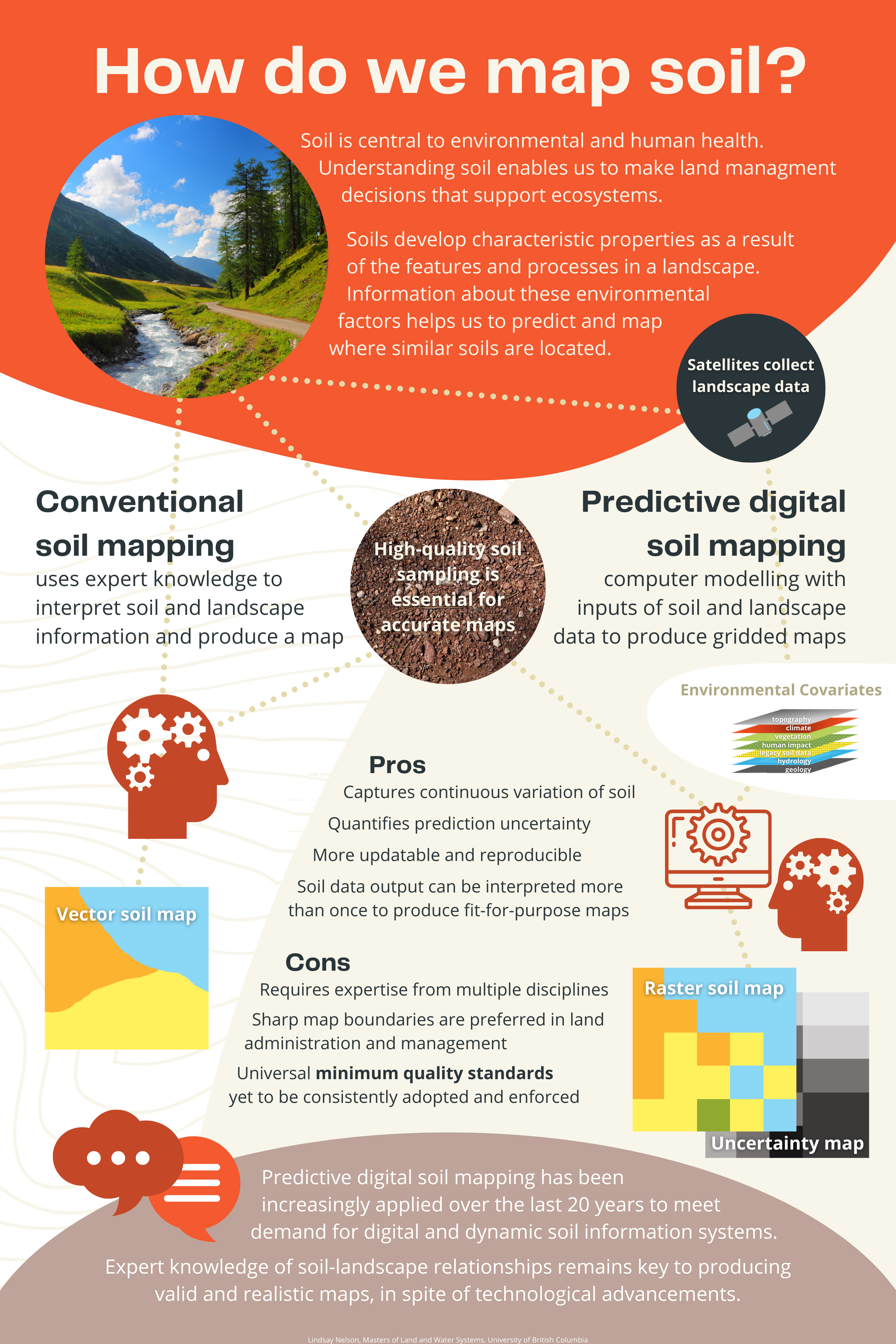Predictive Digital Soil Mapping
Lindsay Nelson, MLWS 2021
Soil is important to human and environmental health and ecological functioning. There is a demand for high-resolution quantitative soil data in many applications including agriculture, forestry, mining, land reclamation, and environmental science. Soil scientists are trying to meet this demand using new mapping methods. Soil scientists combine soil observations with models of soil-landscape relationships to interpret how soil varies over space. Conventional mapping depends on mental models and produces sharply bounded map units with qualitative estimates of accuracy and uncertainty. The process of conventional mapping is time-consuming and resource-intensive, and the results are not updatable or completely reproducible.
Recent technological advancement (GIS, remote sensing, computer processing) has enabled soil mapping to become more quantitative. Predictive digital mapping harnesses statistical techniques to generate soil maps with gridded continuous data and quantitative uncertainty estimates. These maps can be updated dynamically as new data becomes available. The inputs for predictive mapping are soil values used to calibrate and validate models and environmental covariates. Maps are commonly produced using existing or legacy data, often due to budget constraints, but the collection of new data using statistical sampling designs and an independent dataset for model validation have the potential to generate the greatest accuracy.
Predictive digital soil mapping has progressed from academic to operational over the last decade. Soil survey agencies in many countries now incorporate these techniques with good results. Some soil properties and classifications can be predicted with suitable levels of accuracy, but others are more difficult to estimate, providing opportunities for future developments. With this progress, the development of minimum quality standards has improved, but a universal system is yet to be enforced. Communication with end-users is critical to the success of PDSM, to ensure that mapping products are valuable and being applied judiciously.
Full report available upon request.
